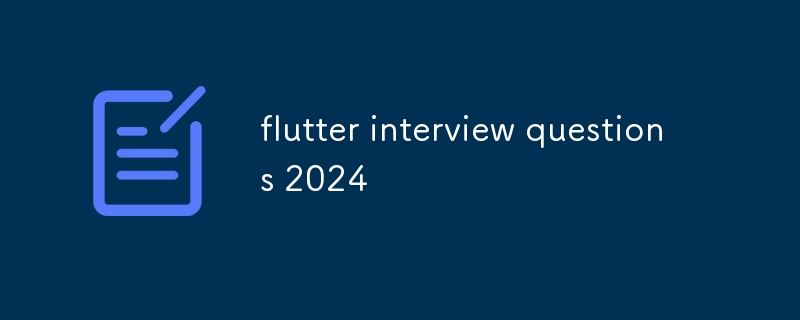Flutter is a cross-platform app development framework known for its code reusability, hot reloading, responsive UI, and native performance. This abstract highlights Flutter's reactive programming model, featuring unidirectional data flow, state manag

Key Features of Flutter for Cross-Platform Applications
Flutter's unique design and architecture set it apart as an ideal choice for developing cross-platform mobile applications. Here are its key features:
- Single Codebase:Flutter allows developers to build code once and deploy it across multiple platforms, including iOS, Android, web, desktop, and embedded systems. This code reusability not only saves development time but also ensures consistency and reduces maintenance efforts.
- Hot Reload:This feature in Flutter enables developers to make code changes and see results almost instantly on the emulator or device. It accelerates development by eliminating the traditional build-compile-run cycle, speeding up the iterative development process.
- Reactive Framework:Flutter embraces a reactive programming model, making it easy to create dynamic and responsive user interfaces. It automatically updates the UI based on changes in underlying data, allowing developers to focus on business logic rather than managing manual data binding.
- Native Performance:Unlike hybrid frameworks, Flutter compiles code directly to native ARM or x86 instructions. This approach ensures exceptional performance and a native-like feel for end-users, even on resource-constraint devices.
- Expressive UI:Flutter provides a comprehensive set of UI elements and widgets, giving developers the flexibility to create visually appealing and engaging apps. Its focus on customizable widgets empowers designers to bring their ideas to life without sacrificing performance or code complexity.
Flutter's Reactive Programming Model
Flutter's reactive programming model, based on the Dart language's reactive extensions (Rx), differs from traditional approaches in several key ways:
- Data Flow:In Flutter, data flows unidirectionally, from input sources to state notifiers and then to the UI. This simplifies the app architecture, makes it easier to reason about data changes, and reduces the potential for unintended side effects.
- State Management:Statenotifiers, such as ValueNotifiers and ChangeNotifiers, are used in Flutter to manage app state and notify UI components when changes occur. These notifiers facilitate efficient and declarative UI updates.
- Declarative UI:Flutter adopts a declarative UI approach where widgets determine the app's appearance based on its current state. This approach enhances code readability, testability, and maintainability compared to imperative UI programming techniques.
Performance Optimizations in Flutter's Rendering Engine
Flutter's rendering engine, Skia, incorporates several performance optimizations to ensure smooth app experiences:
- Rasterizer:Skia optimizes rasterization by exploiting the GPU's parallelism and using multiple threads to accelerate pixel rendering. This parallel rendering significantly improves the performance and fluidity of complex UI animations.
- Layer Hierarchy:Flutter employs a layer architecture that breaks down the screen into logical layers. By isolating updates to specific layers, it minimizes unnecessary repaints and reduces CPU and GPU overhead, leading to improved rendering performance.
- Widget Caching:Flutter's widget caching mechanism stores previously rendered widgets, reducing the cost of recreating widgets during UI updates. This optimization significantly speeds up performance for scenarios involving numerous widgets and frequent UI changes.
- Hardware Acceleration:Flutter leverages hardware acceleration features provided by mobile devices to offload computationally intensive tasks, such as heavy animations and transformations, to the GPU. This hardware acceleration further enhances the visual experience and smoothness of animations.
- Efficient Memory Management:Flutter's garbage collection algorithm prioritizes the cleanup of unused resources and memory optimizations to avoid memory leaks and performance degradation, especially when dealing with extensive data sets and complex UI structures.
以上是flutter 面试题2024的詳細內容。更多資訊請關注PHP中文網其他相關文章!





